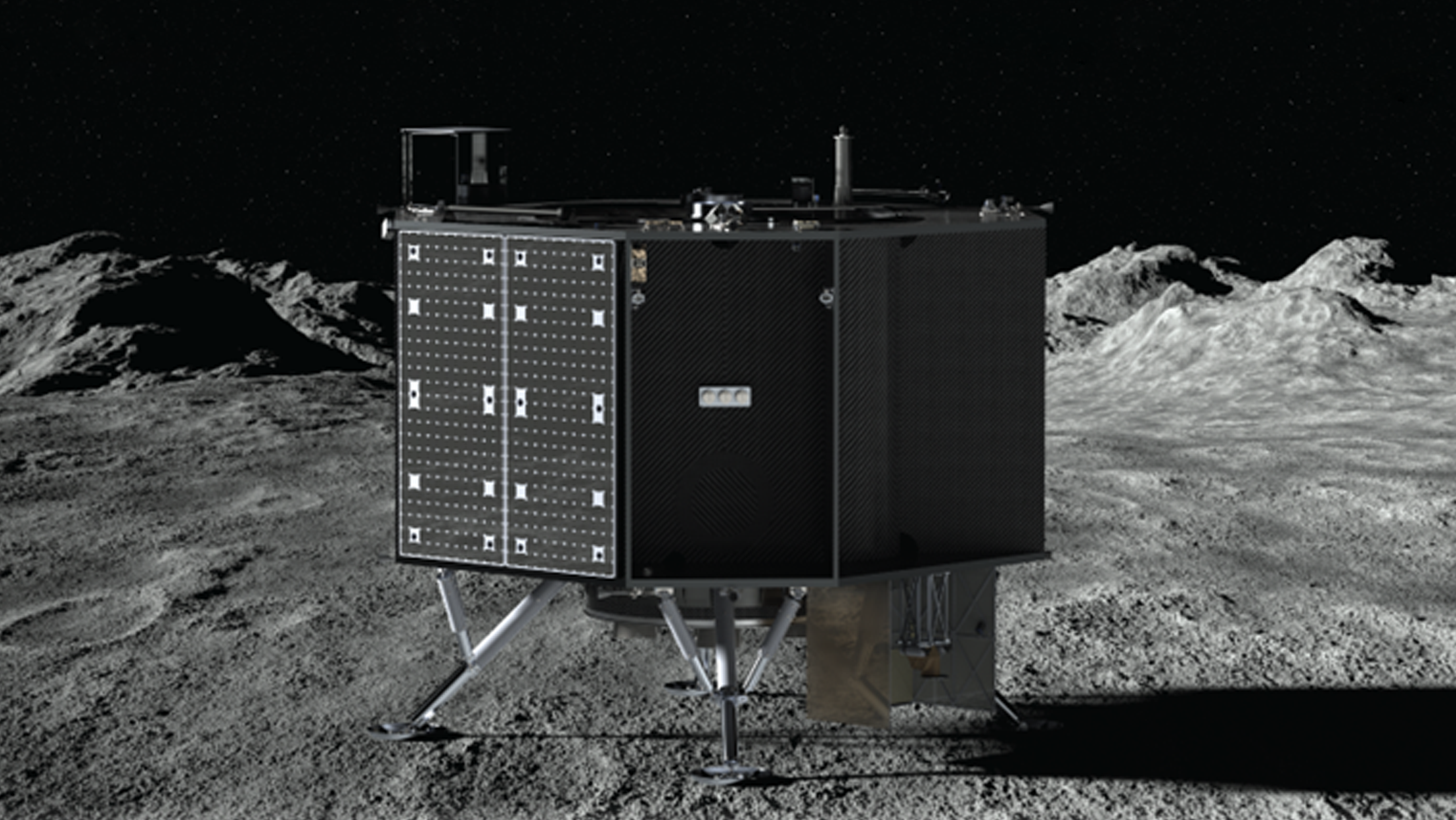NASA moon program aims for a daring commercial landing on the far side in 2025
Only one other country has landed there before.

Like Pink Floyd, a new NASA-funded commercial mission will see us on the 'dark' side of the moon.
The agency announced Thursday (July 21) it will task a team led by Draper to carry a suite of science and technology payloads to Schrödinger Crater, an impact basin on the moon's far side. Touchdown of the Draper SERIES-2 lander is scheduled for 2025.
The $73 million Commercial Lunar Payload Services (CLPS) contract, if successfully executed, will represent the first time NASA science has touched down on the far side of the moon. (This is the eighth CLPS contract announced so far and also, the first CLPS mission to target the far side.)
Related: Every mission to the moon
Only one country has successfully completed a mission on the moon's far side, and relatively recently: China's Chang'e 4 lander carrying the Yutu 2 rover arrived in Von Kármán Crater on Jan. 2, 2019. Complexities in landing on the far side of the moon arise because this side is out of direct radio communication with Earth, which means that all information must be beamed to our planet through satellite relay.
NASA said the uncrewed far-side mission will gather science in a region very different from the crewed Artemis lunar missions, allowing for valuable context. (Astronauts will instead work in the south pole region on the near side of the moon.)
“Understanding geophysical activity on the far side of the moon will give us a deeper understanding of our solar system, and provide information to help us prepare for Artemis astronaut missions to the lunar surface," Joel Kearns, deputy associate administrator for exploration in NASA's science mission directorate in Washington, said in the agency statement.
Get the Space.com Newsletter
Breaking space news, the latest updates on rocket launches, skywatching events and more!
CLPS is an agency program that aims to study the moon's history and environment using privately developed landers and rovers that carry experiments and equipment to and on the lunar surface.
Draper's lander design is based on work by a U.S. subsidiary of Tokyo-based ispace, which unveiled the Series 2 robotic moon lander in 2021. To stay in touch with Earth, Draper's statement said the company plans to contract Blue Canyon Technologies for two satellites that will be deployed just before landing.
Advanced Space, the operator of the lunar CAPSTONE mission currently making its way to the moon, will "support the team in the mission planning and operations of the satellites," the statement added.
The lunar science payloads Draper will ferry, selected in 2019 and 2021, include three packages to probe Schrödinger crater.
One package is the Farside Seismic Suite (FSS), which will bear two seismometers to measure moonquakes — allowing scientists to learn how often the far side is hit by small meteoroids.
The Lunar Interior Temperature and Materials Suite (LITMS) will examine how the moon's interior may conduct heat and electricity, while the Lunar Surface ElectroMagnetics Experiment (LuSEE) will look for the electrostatic properties behind strange "dancing dust" on the moon's surface. LuSEE will also examine how the solar wind, or constant stream of charged particles from the sun, interface with the lunar surface and magnetic fields, among other investigations.
Artemis seeks to land humans on the moon no earlier than 2025 to perform crewed science. The program's first uncrewed test mission, Artemis 1, may launch as soon as Aug. 29 as the team continues working through tasks from a "wet dress rehearsal" launch test earlier in the year.
Follow Elizabeth Howell on Twitter @howellspace. Follow us on Twitter @Spacedotcom and on Facebook.
Join our Space Forums to keep talking space on the latest missions, night sky and more! And if you have a news tip, correction or comment, let us know at: community@space.com.

Elizabeth Howell (she/her), Ph.D., was a staff writer in the spaceflight channel between 2022 and 2024 specializing in Canadian space news. She was contributing writer for Space.com for 10 years from 2012 to 2024. Elizabeth's reporting includes multiple exclusives with the White House, leading world coverage about a lost-and-found space tomato on the International Space Station, witnessing five human spaceflight launches on two continents, flying parabolic, working inside a spacesuit, and participating in a simulated Mars mission. Her latest book, "Why Am I Taller?" (ECW Press, 2022) is co-written with astronaut Dave Williams.









